#wilhelm nestle
Text

«Séneca roza a veces ideas cristianas, razón por la cual se creyó en un tiempo que estuvo en relaciones con el cristianismo. Ya los antiguos cristianos falsificaron un supuesto epistolario entre Séneca y el apóstol San Pablo. Pero las analogías entre Séneca y el cristianismo son meras consecuencias de presupuestos análogos; así, por ejemplo, la actitud moral respecto del prójimo es una consecuencia de la idea de hermandad de los hombres, común a la escuela estoica y a la religión cristiana. Por lo demás, ni siquiera la convicción senequista de la inclinación del hombre al mal tiene nada que ver con la doctrina cristiana del pecado: por eso no necesita Séneca de ningún Salvador, ni una doctrina de la gracia y de la redención. Pues Séneca tiene la conciencia limpia. Seguramente habrá oído hablar del cristianismo, igual que Tácito y que Plinio el Joven. Pero San Agustín da testimonio de que, en todo caso, Séneca no ha citado nunca a los cristianos en sus escritos, así como de que despreciaba a los judíos y se lamentaba de la difusión de su religión.»
Wilhelm Nestle: Historia del espíritu griego. Editorial Ariel, pág.321. Barcelona, 1981
TGO
@bocadosdefilosofia
#nestle#wilhelm nestle#historia del espíritu griego#estoicismo#cristianismo#séneca#san pablo#pablo de tarso#cosmopolitismo#hermandad entre los hombres#salvador#gracia#redención#mal#tácito#plinio el joven#san agustín#agustín de hipona#judíos#judaísmo#religión#cristianos#época antigua#filosofía greco-latina#filosofía latina#roma#teo gómez otero#la muerte de séneca#rubens#museo nacional del prado
8 notes
·
View notes
Text
young royals fic rec, 13/?
i’m (slowly) working my way through the wilmon tag on ao3 and thought that as i go i might shout out some fics i enjoy along the way! i've tagged authors where i knew their tumblr url, but please feel free to tag folks or dm me if you know ones i've missed!
1. play my song by @ishotforthestars - Wille wishes he could sleep, would give just about anything to end the sleepless nights, escape the racing thoughts that have taken over his tired mind. By accident he stumbles upon a late night radio show one night and suddenly finds himself longing for the company of a boy he's never met.
2. too in love to die by adogwithabirdatyour_door - It isn’t an option for Wilhelm. Whether Simon chose to forgive him or not, Wille can’t be with him- not in the way he deserves, not in the way that Wille longs for. This part of Wilhelm will always have to be hidden, and he knows now he can’t force anyone to be his secret, to put up with this shit.
3. up for the challenge (orphaned fic) - Simon visits the palace for Christmas dinner with the queen, plus a more realistic take on a particular kind of 'first time'.
4. Following an Ominous Voice Into a Dark Alleyway Turned Out to be a Great Idea, Actually by @spaghett-onaplate - Simon Eriksson is upset while wandering through Bjärstad at night. He hears a voice coming from a dark alley and decides to follow it. Met with the absurdity of the prince of Sweden trying to lure a feral cat out of a drain with a pepperoni pizza and failing miserably, he soon forgets about his troubles.
5. weigh down on me (stay 'til morning) by @echo-and-dust - A new semester at Hillerska begins, and Wilhelm enjoys a peaceful morning with Simon in bed.
6. wille’s sweet blue (that is a color) bedsheets are something that can actually be so personal by @fishscalesky - “I really am sorry,” Wille murmured, turning his head slightly and speaking into Simon’s hair. A few seconds later, Simon felt him press a kiss there, nestled among his curls. Simon’s knees knocked against Wille’s legs as he shifted, gravel scraping under them. He didn’t want to open his eyes. “Sure.”
7. and i knew you'd come back to me by pocketsizedomar - what i imagine could be happening in that season 2 stills of simon and wille in the hallway, and that other picture we got of them hugging
47 notes
·
View notes
Text


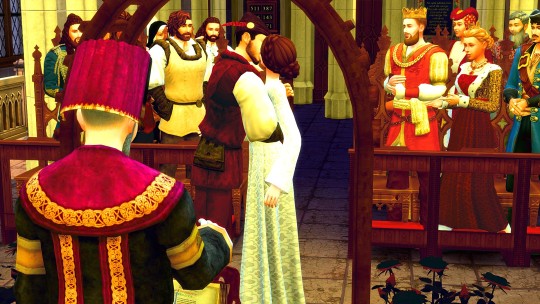



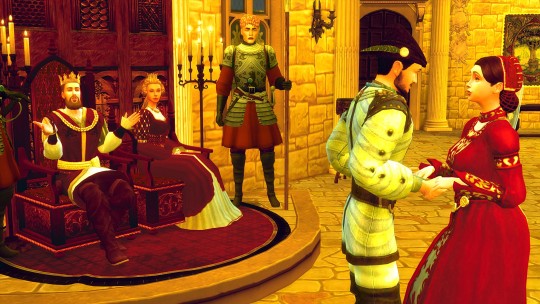





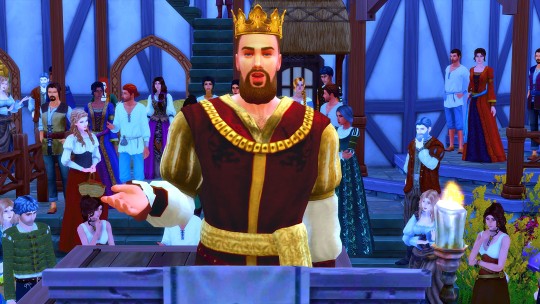
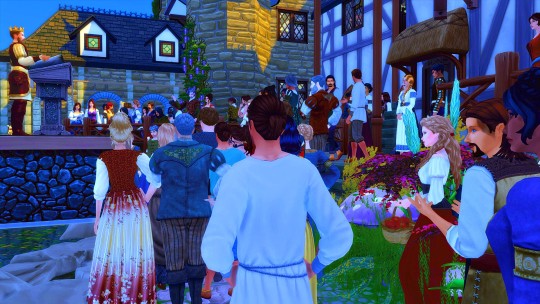

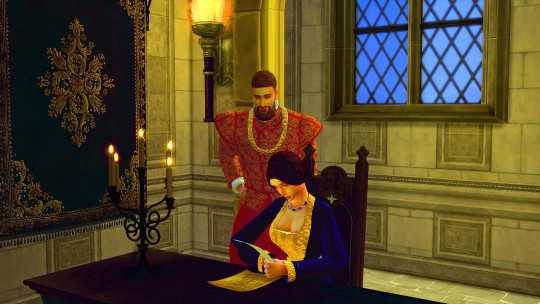
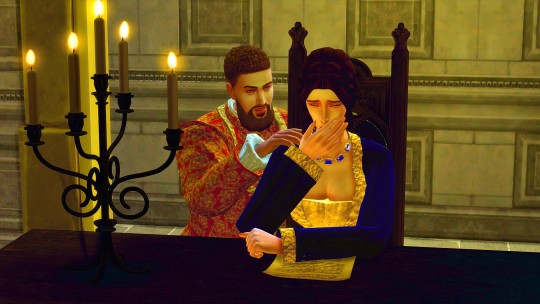





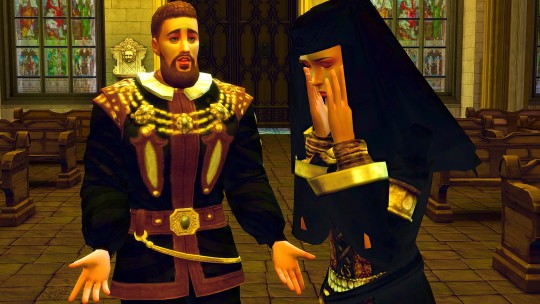





In the summer of 1339, as the rain's gentle touch graced the serene realm of Aarbyville, St. Anthony's Cathedral emerged as a solemn stage for a poignant ceremony. Lady Jane Landgraab, clad in somber mourning attire, her countenance veiled by the shroud of grief, stood beside her 7-year-old son, Lorus. Their hearts weighed heavy, for before them lay the dark stone coffin of Lord Michael Landgraab, who had passed away unexpectedly in his slumber at a mere 40 years of age.
Lady Jane and Lorus, their shared loss etched in their eyes, gazed upon the final resting place of their beloved. Their expressions conveyed profound sorrow, and an aura of disbelief clung to them like a shroud. As the cathedral bells tolled in mournful unison, mother and son leaned upon each other for silent solace, their tears the only words their hearts could speak.
Their shared grief brought them to the tranquil chapel nestled within the cathedral's embrace. Here, silence reigned, providing a sanctuary for their emotions to flow freely. Together, they wept, finding consolation in their shared sorrow, a flicker of light in their darkest hour.
Into this poignant scene stepped Lady Jane's brother, the formidable King Wilhelm of Windenburg. He had come to pay his respects to his brother-in-law and to offer what comfort he could to his grieving sister.
With a heart heavy with sorrow, King Wilhelm approached Lady Jane. His eyes mirrored the shared grief that weighed upon their family. With great tenderness, he expressed his deepest condolences, using words of sympathy and support to alleviate the crushing burden that had fallen upon Lady Jane's shoulders.
Yet Lady Jane's distress ran deeper than mere grief; she was overwhelmed. The responsibilities of her newly acquired title as Lady of Aarbyville had proven to be a burden too great. Lord Michael's sudden and untimely passing had left her in a state of disarray. The prospect of shouldering the governance of the realm, especially with a 7-year-old Lorus in tow, was something she could hardly bear. She felt lost in this unfamiliar role.
Understanding the depths of his sister's despair, King Wilhelm knelt beside young Lorus, his promise to be their unwavering pillar of strength resonating with sincerity. With this pledge of support, Lady Jane glimpsed a glimmer of hope through her tears and embraced her brother in a somber, heartfelt hug.
In the weeks that followed, King Wilhelm became a familiar presence at Castle Landgraab in Aarbyville, the stately home that had graced the Landgraab family since the days of King Otto III of Tredony. Within the confines of her late husband's office, amidst the faint scent of history and the volumes of leather-bound tomes, Lady Jane's inner turmoil became evident. The weight of responsibility bore down upon her, and she struggled to cope with the immense demands of leadership.
Recognizing her predicament, King Wilhelm stood by her side, both as a brother and a ruler. With a heavy heart, he assisted Lady Jane in drafting a decree, one that would relinquish her power and place the realm of Aarbyville under Windenburg's dominion. The decree proposed that Aarbyville would henceforth become a duchy within the expansive realm of Windenburg. It further stipulated that when young Lorus reached the age of 18, he would ascend to the position of Duke, inheriting Castle Landgraab and its responsibilities.
For Lady Jane, this decision was a momentous one. She knew that her signature upon that document would irrevocably alter the course of her life and that of her son. The potential risks and uncertainties weighed heavily on her mind. King Wilhelm, always the supportive brother, placed a reassuring hand upon her shoulder, assuring her that brighter days lay ahead.
King Wilhelm was acutely aware of the strategic importance of this decision. The annexation of Aarbyville was not just about expanding his vast empire; it was also about securing trade routes and a wealth of resources. Aarbyville was strategically located, and seizing power from this region could help King Wilhelm strengthen his political alliances across the globe. This decision had far-reaching implications, and King Wilhelm was resolute in his belief that it was the right path for his kingdom. Aarbyville was once an integral part of the vast Tredonian realm, had remained steadfastly loyal to its Tredonian heritage since the days of King Otto III in the 12th century. When the mighty Tredonian empire fell to Bagley's rule in 1314, Aarbyville chose a different path, emerging as a sovereign state, proudly maintaining its Tredonian roots. Situated along the picturesque coastline, just a few miles from Windenburg's borders, Aarbyville had embraced its unique status. In the wake of the Tredonian empire's decline, this thriving city had evolved into a beacon of commerce and trade, fostering diplomatic relationships with neighboring kingdoms.
In the days that followed, King Wilhelm stood before the people of Aarbyville in the main town square. As he addressed a sea of expectant faces, some filled with trepidation, he outlined the transition into Windenburg's fold. He explained the laws and changes that would come into effect and assured the people that their basic needs, from meat to grain and wine, would be met. With words of hope and prosperity, he promised to rule justly and benevolently.
As the sun dipped below the horizon, King Wilhelm and Queen Cordelia hosted a magnificent banquet at Windenburg Castle. The grand dining room was filled with nobles, royals, and dignitaries from across the realm. The banquet was a celebration of new beginnings, prosperity, and a unified realm.
The tables were laden with a sumptuous feast. A boar's head, fresh-baked bread, a medley of cheeses, an array of succulent meats, and a lavish selection of desserts graced the banquet. It was a celebration that marked not only the integration of Aarbyville but also the dawn of a strengthened realm.
During the banquet, King Wilhelm, ever the astute strategist, observed his favored courtier, Benedict Britechester, gazing intently across the table at Lady Jane. This sight sparked a shrewd idea in the king's mind, one that could benefit not only his kingdom but also Lady Jane's future.
Following the banquet, the celebration continued within the royal court. King Wilhelm and Queen Cordelia presided from their opulent thrones, overseeing the festivities. King Wilhelm then called forth Lord Benedict and Lady Jane to ascend to the dias before the monarchs.
With a voice that resonated throughout the hall, King Wilhelm proposed the betrothal of Benedict and Lady Jane, a union of great honor and strategic importance. It would bind the Britechester bloodline with the royal family of Windenburg for generations to come and Marrying Lady Jane to Lord Benedict would also ensure the Landgraab family's continued loyalty to the crown through her son. This marriage would serve as a binding agreement, solidifying King Wilhelm's control over Aarbyville.
Overwhelmed by this great honor, Benedict took Lady Jane's hands in his. Their eyes locked in a moment of mutual understanding, recognizing that this union was more than politics; it was a connection of two souls.
In the following weeks, as they courted and drew closer, their bond transcended the realms of politics and power. Love blossomed between Lady Jane and Lord Benedict. They found solace and strength in each other, two souls who had weathered the storms of life together.
Lord Benedict not only secured a place in Lady Jane's heart but also embraced a parental role in young Lorus's life. His care and kindness did not go unnoticed by the mourning child. Lorus came to see him not as a stranger but as a guardian and a friend.
By the early fall of 1339, Lady Jane and Lord Benedict were wed at the renowned Westsimster Abbey in a grand and splendid ceremony. It was a union born of politics but solidified by love. As they exchanged their vows, their smiles spoke of the profound connection they had formed.
Following the wedding, King Wilhelm granted the new couple a generous gift. Since his own wedding three years prior, he and Queen Cordelia had worked tirelessly to expand the land that had been gifted to them by King Thomas, Cordelia's father. This area had been transformed into a thriving town with abundant farms and resources. King Wilhelm's gift to the newlyweds was that he had named the realm the duchy of Britechester and appointed Benedict as Duke. The couple came to the throne room at Windenburg Castle, where Wilhelm publicly bestowed upon them the titles of Duke and Duchess of Britechester.
By the spring of 1340, the couple eagerly anticipated the arrival of their first child. It was a testament to the enduring power of love amidst the backdrop of political strategy and destiny. The realm of Windenburg, now further strengthened by the bonds of family and alliance, stood poised for a bright and prosperous future.
#simsmedieval#sims4#windenburg#royalsims#royal#sims#thesimsmedieval#gameofthrones#royalty#simsstory#simmer#historical sims#royalty sims#sim legacy#sims 4#simblr#sims 4 gameplay#sims 4 cc#sims 4 screenshots#my sims#sims 4 edit#14th century#historicalsims#history#historical#historic#world history#legacy challenge#ts4 legacy#sims 4 legacy
52 notes
·
View notes
Note
I love the laura bonus ficlet! Do you maybe can write about her thoughts of when she found out that it was Wilhelm who was there with Simon in Bjärstad?
Thank you for loving Laura! (The previous Laura ficlet is here to give context)
Also for the reblogs, this is a bonus ficlet from my longer YR fic Everybody Loves You Now!
This picks up from slightly later in the conversation in the car between Simon and Laura.
Laura considers her next question for all of thirty seconds before going with her gut. “Is ‘Fuck this Motherfucker’ about Candace?”
Simme laughs. She made Simme laugh! There's a little buzz of pride in her stomach. “Is that what people think? You guys know I didn’t write it, right?”
“I know, but you said you always try to have a concept in mind when you sing, to make the songs about something.”
He gives a little nod, acknowledging her point. “True. I guess it’s about Candace a lot.” He shrugs. “But one time it was definitely about this stretch of highway we’d been on the night before that was so full of potholes -”
“Atlanta to Nashville,” she says, instinctively, like this is some Simme trivia game and not just her knowing a weird number of facts about his actual life. “Sorry. I just… I saw the video.”
She glances sideways at him again. He looks amused rather than mad, and he hasn’t refused to answer any of her questions yet so she kind of has to. “Can I ask… Who do you think about when you sing the love songs?”
“Wilhelm.”
There’s no hesitation to it. No equivocations, no questioning. Just the name, said so softly that it takes her a moment to connect it to the reality of Crown Prince Wilhelm who gives speeches on Year with the Royal Family and gets photographed in suits hugging babies and opening hospitals.
It’s a weird crossing of streams, realising The Crown Prince is a person and there are people he dated in high school who say his name like it’s something precious they want to keep hold of.
But like, that was four years ago. And Simme hasn’t even been back to Sweden since. “Still?” she finds herself asking.
“Yeah.” He’s looking out the window, at the shadows of trees in the darkness. “He’s the only… there’s never been anyone else.”
There have been four years of constant wall to wall news coverage of Simme with this popstar or that actor or this reality TV star. Simme laughing off his high school relationship with the Prince of Sweden like it was nothing at all. “I thought… I mean we all heard about Alfonso…”
He laughs something bitter lingering at the edges to it. “I thought it was a marketing stunt, he thought it was true love. We didn’t last.”
“But you and Wilhelm are still…”
“No,” he says. “We’re not.” His fingers drum against the door handle. “Can you pull over? Just for a minute. I need to do something.”
*
She’s at that point where she’s basically awake but is refusing to admit it, nestled down into the covers trying to avoid opening her eyes, half thinking that if she does everything that happened last night is going to turn out to be a wild dream and she’ll be back in Gothenburg about to wake up and drive to Stockholm to meet Stan and see the show.
Then there’s a gentle knock on the door and an unmistakable voice says, “Hey? Can I come in?” and Laura opens her eyes to a closet-sized bedroom with posters of horses on the walls.
She’d found a nightshirt to sleep in that falls all the way down to her knees, so she’s decent enough to sit up and say, “Okay?”
Simme steps into the room. He’s changed into a purple hoodie, but otherwise he looks much the same. Like he hasn’t slept or showered since he dug out a silk pillowcase from the depths of the linen cupboard. His eyes catch on the horse posters, lingering a moment too long before he looks down at her. “There’s lunch. If you’re hungry.”
She wants to ask ‘are you okay?’ but his eyes keep darting back to the walls, his hands are twitching and he had to pull over multiple times so he could snort a powder that she’s really hoping was not cocaine so she’s not sure she’s ready for the answer.
Also now he’s mentioned food, she’s realising she’s starving. “Sure.”
He nods, takes a step back so she can stand up and then leads her back down the tiny hallway, past family photos that she resists the urge to stop and peer at, and into the kitchen where there are two strangers setting the table and one of them is Crown Prince Wilhelm.
She lets out a noise that might be a yelp, starts a, “You’re-” but thankfully cuts herself off before she can say something completely idiotic like ‘you’re here’ or ‘you’re the prince’ or ‘you’re taller than you look on TV.’
It turns out there is a difference between knowing there is something going on between Simme and the Prince and actually seeing said prince in the flesh wearing Simme’s white hoodie instead of a neatly pressed suit and setting out plates on the kitchen table.
Only the hoodie was oversize on Simme but clearly fits Prince Wilhelm just fine so that’s… a thing.
“Hello,” she says, trying to get back to normal only this isn’t normal because he’s a prince so like. “I mean, your majesty.”
Prince Wilhelm smiles. Up close, it’s the same kind of smile Simme keeps giving her, the one he seems able to paste over whatever he’s really feeling in the moment. “Your majesty is my mother,” he says. “Call me Wilhelm.”
Which of course just reminds her of being in the car the night before, the way Simme’s voice softened on Wilhelm’s name. And Simme had said they weren’t still… but Wilhelm is here, in this middle-of-nowhere town. Not Simme’s team, not Candace, just Wilhelm.
A good half of the internet would pay a large fortune for a glimpse of what she's seeing now. The way Wilhelm's eyes track Simme's progress through the room, the way Simme's whole body seems angled towards the Prince even when they're not interacting at all.
"Have you told anyone you're here?" Wilhelm's bodyguard asks her.
She hasn't. And as Wilhelm and Simon both reach for a plate at the same time and flinch back a moment before their fingers brush, she knows she never will.
#elyn fic#commentary meme#bonus content meme#tw drugs mention#at one point I wanted to write a whole laura spin-off just about how wild it would be to be in the car with Your Blorbo for two hours#just imagine the awkward weirdness
38 notes
·
View notes
Text
this is related to the last post i reblogged but here's the residents of ivarstead from my fic if they were flowers:
Gwilin // Mexican marigold (Tagetes erecta)

Gwilin irradiates happiness, and what better shape to irradiate something could one possibly take than a sphere? The Nahuatl word for this flower literally means "twenty flowers", and what a fitting name that is, for this is actually an 'inflorescent' or 'composite' flower, made up of many tiny little flowers arranged on the base of a single sepal.
Fari // Touch-me-not (Mimosa pudica)

Like Fari, the touch-me-not is bright, bold, and thorny, and it'll take over the world (and your backyard) if you let it. But it also has a soft side–this bad boy is one of the few plants that display nyctinastic movement, which just means that they respond very very quickly to touch! When disturbed, the touch-me-not's leaves fold and curl away for a few minutes and open up again when the coast is clear. Emotionally, that is 100% Fari.
Narfi // Moonflower (Ipomoea alba)

This one is sort of an inside reference. One of the commenters on my fic mentioned that they headcanon Narfi as being a werewolf. Seemed fitting to choose a flower that likes to open at night :)
Wilhelm // Gardenia (Gardenia jasminoides)

Wilhelm is a simple guy with simple needs. He's hearty, helpful–and perhaps a tad old-fashioned for some folks' tastes. But he's sweet, like this flower's unmistakable perfume, and he doesn't put on airs, and he's got a good heart. Easygoing flower for the easygoing innkeeper. Fun fact: the principal component responsible for giving this flower it's lovely scent is called farnesene, which is the same chemical associated with the smell of green apples.
Lynly // Purslane (Portulaca spp.)

This flower has hopes and dreams. It just looks it. At some point in her life, Lynly wanted nothing more than to perform at the Imperial City Opera House, but life took her down other paths, and she's content with what she's made of herself in Ivarstead, even if the occasional insecurity about her musical skills gnaws at her every now and then. She can thank her mean old lute instructor at the Bards' College for that.
Temba // Bougainvillea (Bougainvillea glabra)

There's more than meets the eye with the bougainvillea, and there's more than meets the eye with Temba. Though the wispy, papery blots of pink, white, orange, or yellow that can dot this South American plant's bush may seem like the petals of its flower, they are actually modified leaves. The true flower is tiny, and often plain white, and sits nestled among them. If Temba appears to be bitter and impatient and angry at times it's because, in truth, she often is. But that's only because she thinks she can't afford to be seen as anything but. Do most people get close enough to appreciate the tiny beauty of the bougainvillea's true flower? Do most folks ever ask themselves what lies beyond Temba's scratchy surface?
#tesblr#gwilin#temba#rentfree#depictions#i'm putting this under my art tag because the writing is sorta flowery i guess (literally)
2 notes
·
View notes
Text
Horror Tropes Quiz!
wasn't tagged but I saw @the-lastcall do this and it looked fun! quiz here.
Sterling Glass (fo76)
The Ancient Evil - they have wronged you. perhaps, once, you were something powerful– something to be looked at with adoration and worship and fear. but time does not yield to you, and when you lay to sleep, you awake to find yourself forgotten. your rage is insatiable. no matter what, you will make sure they do not forget this time.
(at first I thought this made no sense, but after reflecting on it, I think it does. After waking up in a new, worse, world, Sterling is so tired and angry and just wants life to go back to being how it was.)
Wilhelm (tow)
The Haunted House - decrepit and falling apart at the seams; time has not been kind to you, has it? termites have nestled in your bones, and stray cats find comfort in your sinews. you may be victim to time and erosion, but your abandoned corpse remains a refuge for unwanted things. vermin and ghosts thank you. what greater kindness can there be than offering shelter?
(this one immediately yes. Wil was devastated waking up to realize his family was still stuck on the Hope. But in the wake of that devastation, he managed to draw in a new family, of sorts.)
Not tagging anyone, but you're welcome to also do this if you like!
3 notes
·
View notes
Text
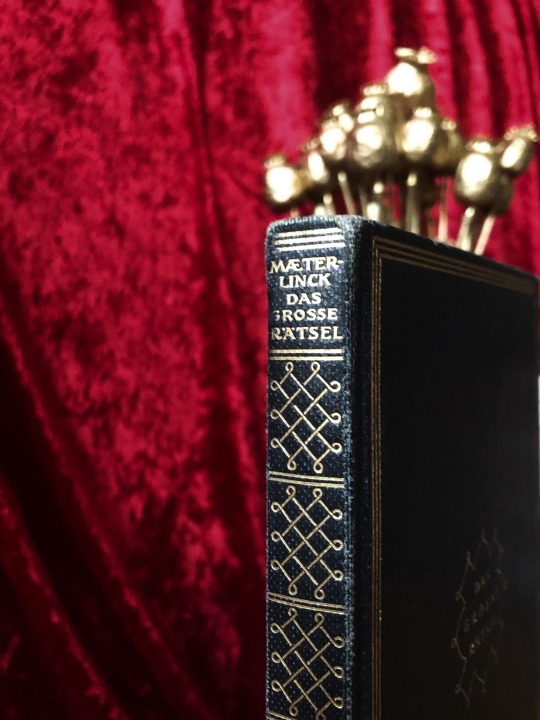

Excitingly presenting Count Maurice Maeterlinck's "The Great Mystery", published 1924 in Jena, Germany.
Maeterlinck is presenting prehistoric occultism and archaic forms of religion with the focus on common metaphysical conclusions to show how the search for the primary reason can be found in discovering our transcendental I.
The "Great Mystery" is not about doctrines of secret societies or exploited revelation through wonder and magic,
it is about the purest knowledge we can have:
Knowing to know nothing and the confession of the unrecognisable, because in all things we can just assume prohabilities.
Questioning existence and being, diving into ontological and metaphysical theories, is an advance for strenghtening the mindfulness and as well cures bias, that are preventing
earthly ones to be fully capable of the One and Eternal Good.
Wonderfully Maeterlinck is underlining that the first primitive
beliefs were too metaphysically, too incomprehensible,
to nourish a religion. The highest wisdom of "Knowing of Not Knowing" and the confession of our mental limitation,
are the most significant cognitical achievements.
Especially in our science-optimistic epoch, it is easily to
underestimate phenomena, because the technology to
measure cannot be adequate.
Maeterlinck is consulting many regions and the theogony and cosmogony, to underdraw, that the One, who is the Cause and Reason of all, is defined in an analogous manner, but in order to
reach more peple, were rephrased over the decades.
This is also kind of the problem, we have today:
In order to make metaphysical discoveries more understandable
for the standard population, scholars invented assistance and therefore masquerading the Eternal Good, by materializing Divine essence creating a maladjustment, that haven't helped the majority, to come in contact with their inner God, because they were just made to catchers of miracles and slaves of their profane expectations.
Who can be satured by the heavenly bread of self-denial? Anyone who is intended, to not see a deficit in "not knowing", but the biggest and holiest freedom, we could ever reach in this dimension of living?
This book is a good introduction for comparative metaphysical studies, but of couse, Maeterlinck had to compromise the opulence
of the topics, so the impression of gaps in historical descriptions can be unsatisfying.
But thousands of years of metaphysical questioning (from Ancient India and Egypt [wonderful how reciprocal their transcendental truth were formulated and transported over Chaldaia into the Bible and revitalized in Kabbala and Medieval alchemy...just to give a hint of connectness in ties and bonds...] over the Pre-Socratic philosophy, that had an understanding of the One and Absolute God [the Pre-Sorcratic philosophers were highly influenced by Egyptian belief, for instance the Orphism, metempsychosis of Pythagoreanism, ...]
can not be compressed in 211 pages and mystic touched literature is a bridge building help for the searcher, the most work still has to proceed in the own mind :')


While reading "The Great Mystery" I though to myself, that I should dive more into the Ancient first wellsprings, for example reading the Rigveda or Sefer Yetzirah "The Book of Creation".
But the reading list grows continuously and the books "I have to read" also.
One examplar of interesting and fruitful sources Maeterlinck uses is the work of Wilhelm Nestle "The Pre-Socratic",
but worthreading are many other books too:
Max Müller "Ursprung und Entwicklung der Religion"
La Page Renouf "Lectures on the Origin and Growth of Religion as illustrated by the Religion of the Ancient Egypt"
Bergaigne "La Religion védique d'áprès les hymnes du Rig-Veda"
S. Karppe "Études sur les origines et la nature du Zohar"
Knorr von Rosenroth "Kaballa Denudata"
Blavatzky "Isis unveiled - A Master Key to the Mysteries of Ancient and Modern Science and Theology"
Louis Menard "Hermès Trismégiste"
And it is always an advantage to read tracts and theories of saints, priests and philosophers.

#literature#metaphysical studies#ontology#epistemology#philosophy#theogony#cosmogony#theories of the origin#antiquarian book#occult culture#spirituality#knowledge#eternal faith#alchemy#medieval scholastik#kabbala#hermeticism#Ancient belief#Ancient wisdom#Ancient Egypt#Ancient India#bookworm#books and reading#therapy by reading
6 notes
·
View notes
Text
Herodotus, theology and inquiry culture in the Greece of the 5th century BCE
“Abstract
As remarked by John Gould, ‘Herodotus and religion’ is a vast subject that has provoked much discussion amongst scholars. Thomas Harrison has made a strong contribution to this area with his Divinity and history (2000), in which he comprehensively engages with Herodotus’ approach to religious matters. The purpose of my thesis is to analyse in particular the extent to which Herodotus’ ideas about divinity correlate or conflict with the ideas of other fifth-century (BCE) writers, specifically the sophists and pre-Socratic philosophers. This is an approach to Herodotus that has not been pursued at length since Wilhelm Nestle’s contribution at the turn of the twentieth century in his 1908 article Herodots Verhältnis zur Philosophie und Sophistik. It is also important because Herodotus has only recently again been reconsidered by scholars to be a contributor to the development of theological ideas in the ancient world, despite the fact that he was writing squarely in the midst of the fifth century, a time when all domains of understanding were being re-evaluated by Greek philosophers and scientists. In this way I hope to shed light on the notion that Herodotus was engaging on some level with the significant theological ideas in circulation in his lifetime, a proposition worthy of deeper and updated research.
The scope of this thesis is then as follows:
In chapter 1 I will address the various critiques of Herodotus’ theology analysing the ancient through to the modern literary critics. This is important because I can then determine what shortfalls and assumptions pervade the existing research and what I can contribute that is new.
In chapter 2 I will discuss the concepts of σοφός and σοφιστής, explicating the original meanings of these terms, specifically that σοφός referred to a broad range of individuals with special understanding, and that σοφιστής meant a purveyor of knowledge, and not only a ‘Sophist’ in the later sense of the term, meaning a professional teacher. I will look at Herodotus’ account of Solon as σοφός, especially in terms of Solon’s travel and collection of cultural knowledge. In comparison I will consider the extent to which Herodotus himself is σοφός/σοφιστής. Finally, I will look closely at the practice of display, ἀπόδειξις that display of knowledge through oral presentation at Olympia was a goal of the σοφιστής and that Herodotus actively participated in this display culture. This is important in order to address the misconception that he was simply a storyteller.
In chapter 3 I will pinpoint Herodotus’ theological methodology, meaning the manner in which he gains knowledge that ultimately crystallises his attitude to the divine. More precisely, I will elucidate Herodotus’ self-proclaimed reliance on his own eyewitness account, judgement and inquiry, ὄψις τε ἐµὴ καὶ γνώµη καὶ ἱστορίη. In as much as Heraclitus also explicitly relies on these empirical techniques, I will compare this philosopher’s attitude to the divine with Herodotus. I will also compare the Hippocratic writers’ empirical methodology in a more general sense, as these figures do not inquire into the divine, although comparing their methodological similarities to Herodotus further facilitates my argument that Herodotus was undeniably a proponent of the ubiquitous inquiry culture of the fifth century.
Then, to further explicate how Herodotus relied on his own inquiry and judgements I will examine three cases where Herodotus looks at both divine and mundane accounts of historical three specific individuals’ transformations. I will analyse Herodotus’ judgement about the accounts of Salmoxis’ return from death, Rhampsinitus’ descent into the underworld, and finally the onset of Cleomenes’ madness. In exploring each of these accounts I can affirm the consistency of Herodotus methodology, centred on his personal judgement.
In chapter 4 I will explore Herodotus’ research into specific Egyptian accounts, and how travel and inquiry facilitates his conclusions about the divine. I will focus on the accounts of Helen of Troy as described by Egyptian priests, as well as Heracles, and how Herodotus challenges the Hellenocentric versions of these accounts. In the process I will compare Gorgias’ similar challenge to existing narratives. I will then discuss theories of nature, φύσις, as postulated by the Ionian pre-Socratics, focussing on the Nile’s flooding, and the manner in which Herodotus engages with these theories, ultimately positing his own. In this way I can edify the argument that Herodotus demonstrates an authentic capacity to engage with the intellectual conversations of his day.
In chapter 5 I will explore epistemological limitations in theology, and the fact that Herodotus is clearly aware of these limitations. I will compare his tacit awareness of the limits of inquiry with Xenophanes, Prodicus and Protagoras, in as much as these figures explicated the difficulties in human beings attaining reliable knowledge of the gods. I will also make clear how these figures challenged the traditional narratives of the Olympian gods propagated by the poets. Following this discussion I will analyse Herodotus’ reliance upon witnesses, µάρτυρες, and evidence τεκµήρια, upon which he founded his judgements. This is important to further strengthen my argument that Herodotus was conducting consistent empirical inquiry, by showing his awareness of the limitations of inquiry.
Within the realistic constraints of this thesis I will mainly focus on the Histories book 2, since Herodotus’ general methodology is explicated in this book, nothwithstanding the passages mentioned above.
My overall focus is to re-evaluate and demonstrate beyond mere plausibility that Herodotus was an authentic contributor to both intellectual culture and ancient theology. This is a challenging task considering the diversity of Herodotus’ scope of subject matter, which must be acknowledged for a fair treatment of his work to be undertaken. Ultimately I wish to show that Herodotus is not merely a writer of history of his own fashion, but that he is also actively engaged in the theological conversation of his time on a nuanced level.”
Abstract of the MA thesis (University of Canterbury) of Samuel Wakelin Herodotus the ΣΟΦΌΣ - theology and the claim to knowledge
The whole text of the thesis can be found on https://ir.canterbury.ac.nz/bitstream/handle/10092/16212/Wakelin,%20Samuel_MA%20Thesis.pdf?isAllowed=y&sequence=1

Samuel Wakelin, a New Zealander, has a MA of Classics from the University of Canterbury. He is also model and artist.
2 notes
·
View notes
Text
what: historical tiaras
(All italicised text in this post is made up for the sake of this story)
THE ALEXANDRA FABERGÉ TIARA

Shown worn by Alexandra, Grand Duchess of Mecklenburg-Schwerin (nee Princess of Hannover and Cumberland). Alexandra is a granddaughter of Christian IX of Denmark and was a first cousin to Christian X of Denmark, Haakon VII of Norway (and his wife Maud of Wales), Nicholas II of Russia, George V of the United Kingdom and Constantine I of Greece. Alexandra married Friedrich Franz IV, Grand Duke of Mecklenburg-Schwerin in 1904. They had five children. Alexandra is the great-grandmother of the current monarch, Karolina Augusta I.

Named for its first owner, the Alexandra Fabergé Tiara was created by Fabergé in 1904 as a wedding present from her new husband, Friedrich Franz. It is made of diamonds and aquamarines, with forget-me-nots, bows and Cupid arrows worked into the design.

The tiara was inherited by her eldest surviving daughter, Thyra, upon Alexandra’s death in 1963. The tiara then passed to Thyra’s eldest son, Wilhelm Franz I, it was inherited by his daughter upon his death in 1992.
The tiara is generally reserved for use by the monarch or the monarch’s spouse. Since 2006, Karolina Augusta has been the only person to wear the tiara. She wears it with regularly frequency (once or twice a year).
THE ALEXANDRA FRINGE TIARA

Shown above worn by Alexandra, Grand Duchess of Mecklenburg-Schwerin (nee Princess of Hannover and Cumberland).
Named for its first owner, The Alexandra Fringe Tiara was created for Alexandra in the popular fringe style that imitated Russian Kokoshniks. The tiara was gifted to Alexandra following her marriage to Friedrich Franz IV, Grand Duke of Mecklenburg-Schwerin in 1904.
Alexandra gave the tiara to her eldest surviving daughter, Thyra, in 1945.
The tiara is made of upright rows of diamonds. While the tiara is generally reserved for the monarch and the monarch’s spouse, it is the traditional bridal tiara of the descendants of Thyra, Queen of Mecklenburg. The tiara is regularly worn by the current monarch and her mother, but continues to be lent to members of the family for weddings.
THE ALEXANDRA SCROLL TIARA

Alexandra received this tiara in 1904 as a wedding gift from her parents The Crown Prince and Princess of Hannover. The tiara is made of diamond scroll patterns and creates a circlet (it goes all the way around in a circle).
The tiara is generally reserved for use by the monarch or the monarch’s spouse. Presently, the tiara is only worn by Eleonora, the mother of the current monarch. Karolina Augusta I has chosen not to wear the tiara as of yet.
THE AMALIE FLORAL TIARA
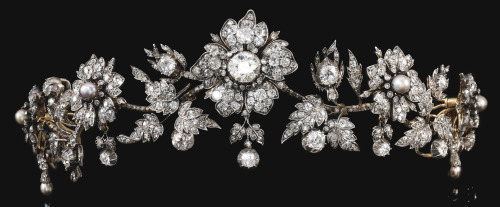
The Amalie Floral Tiara is made of diamonds and is named for its original owner, Duchess Amalie in Bavaria. The tiara was inherited by her second daughter, Karola of Urach. Karola had the tiara refashioned to be worn as a bandeau across the forehead. The tiara has not been refitted to be worn atop the head, but is instead normally nestled amongst the hair or still worn across the forehead. Duchess Amalie in Bavaria is the great-great-grandmother of the current monarch, Karolina Augusta I.
The Amalie Floral Tiara is generally reserved for the monarch or the monarch’s spouse. Presently, the tiara is worn by the current monarch and her mother, although its setting means the tiara is not worn often.
THE ELISABETH PEARL TIARA

Shown above worn by Elisabeth, Duchess of Mecklenburg-Schwerin (nee Princess of Stolberg-Rossla). The Elisabeth Pearl Tiara is named for its original owner. Elisabeth was the second wife of Duke Johann Albrecht of Mecklenburg-Schwerin, they were married in 1909. Elisabeth was the stepmother of Heinrich Ludwig I of Mecklenburg. After the death of her husband in 1920, Elisabeth married his younger half-brother, Adolf Friedrich. Elisabeth died in 1969.

The Elisabeth Pearl Tiara is made of diamonds and pearls. The tiara was inherited by Elisabeth’s step-grandson upon her death. This tiara is generally reserved for the monarch or the monarch’s spouse, and is currently worn by Karolina Augusta I and her mother, Eleonora.
THE ELISABETH SYBILLE GARRARD & CO TIARA

The Elisabeth Sybille Garrard & Co Tiara was purchased for Elisabeth Sybille, Duchess of Mecklenburg-Schwerin (nee Princess of Saxe-Weimar-Eisenach) from the British jewellery house by her husband, Duke Johann Albrecht of Mecklenburg-Schwerin during his tenure as regent for the Duchy of Brunswick. The tiara was created by Garrard & Co in the 1880s and is made of diamonds and upright and suspended pearls.
The Elisabeth Sybille Garrard & Co Tiara was inherited by her son, Heinrich Ludwig I, eventually being inherited by the current monarch, Karolina Augusta I. The tiara is typically reserved for the monarch or the monarch’s spouse, and is a popular choice for Karolina Augusta and her mother.
THE ELISABETH SYBILLE SUNBURST TIARA
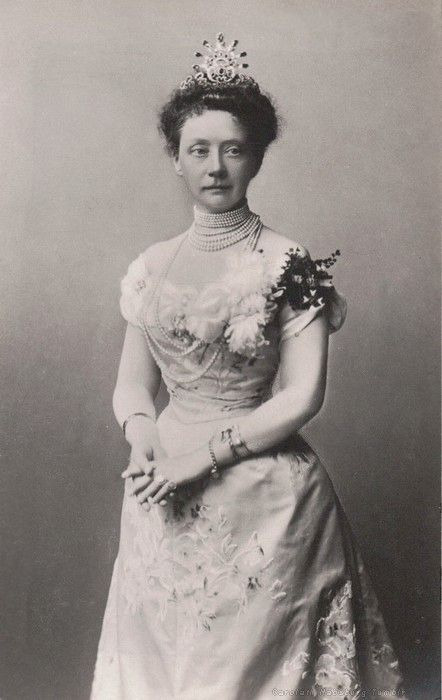
Shown above worn by Elisabeth Sybille, Duchess of Mecklenburg-Schwerin (nee Princess of Saxe-Weimar-Eisenach). The Elisabeth Sybille Sunburst Tiara is named for its original owner. Elisabeth Sybille is the granddaughter of William II of the Netherlands. She was a first cousin to Wilhelmina of the Netherlands and Friedrich III of the German Empire. Elisabeth Sybille was the first wife of Duke Johann Albrecht of Mecklenburg-Schwerin, they were married in 1886. Elisabeth Sybille died in 1908. They had one son, Heinrich Ludwig, who would later become the first King of Mecklenburg. Elisabeth Sybille is the great-great-grandmother of the current monarch, Karolina Augusta I.
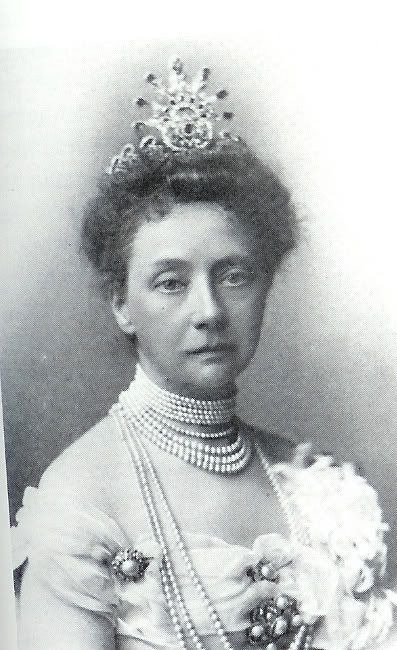
The tiara was made as a wedding gift from jewels provided by her mother, Princess Sophie of the Netherlands. The tiara is made of diamonds and rubies, though the rubies can be swapped out for diamonds and pearls (along the top sunburst section).
This tiara is also generally reserved for the monarch or the monarch’s spouse. The tiara is an unusual design that does not always work in a modern setting. However, the tiara is still worn by Karolina Augusta I and her mother every couple of years.
THE KAROLA GARLAND TIARA

Named for its first owner, the Karola Garland Tiara is composed of a foliate, floral and garland design made up of diamonds and emeralds. It was purchased for Princess Karola of Urach as a wedding present by her husband-to-be, Heinrich Ludwig I of Mecklenburg. Karola is the great-grandmother of the current monarch, Karolina Augusta I.
The Karola Garland Tiara is generally reserved for use by the monarch or the monarch’s spouse. Presently, it is worn by the current monarch and her mother.
THE KAROLA BELLE ÉPOQUE TIARA

Named for its first owner, the Karola Belle Époque Tiara is a garland styled diamond and pearl tiara by the Dutch jewellery designers, J.C. Burnier & Zoon. Heinrich Ludwig I bought the piece for his wife as an engagement gift in 1918.
The Karola Belle Époque Tiara is generally reserved for use by the monarch or the monarch’s spouse. Presently, it is worn by the current monarch and her mother.
THE KAROLA CARTIER STEEL TIARA

The Karola Cartier Steel Tiara is named for Queen Karola of Mecklenburg (nee Duchess of Urach) and was bought by her husband as a wedding present in 1918. The tiara was created by Cartier a few years earlier and is made of diamonds and blackened steel.
The Karola Cartier Steel Tiara was inherited by Queen Karola’s son, Paul Friedrich, upon her death in 1980. It is now owned by the current monarch, Karolina Augusta I, and this unusual, but striking, tiara is among the monarch’s favourite pieces. It has typically been worn by the monarch or the monarch’s spouse, but Eleonora has chosen not to wear it since the end of her daughter’s regency in 2006.
THE KAROLA CHEVRON TIARA

The Karola Chevron Tiara, named for its original owner, Queen Karola of Mecklenburg, and the diamond chevrons prominent in its design, was gifted to Karola by the noble houses of Mecklenburg following the birth of her son, Paul Friedrich in 1919.
The tiara is made of diamonds and is designed to be worn as a bandeau across the forehead. Its design does not allow it to be easily converted into a typical tiara and requires specific hairstyles to sit properly atop the wearer’s head.
The Karola Chevron Tiara was inherited by her son, Paul Friedrich, upon her death in 1980. It is currently owned by the current monarch, Karolina Augusta I. Typically worn by the monarch or the monarch’s spouse, The Karola Chevron Tiara is not frequently worn by Karolina Augusta I or her mother, but makes occasional appearances.
THE KAROLA ART DECO NECKLACE TIARA
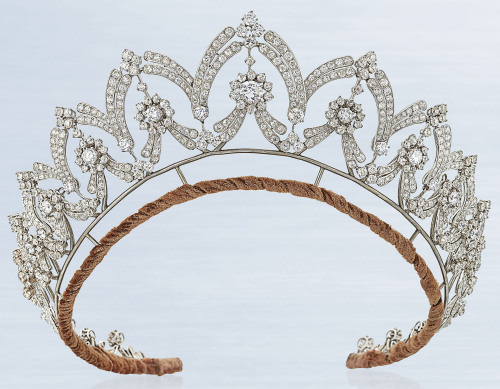
The Karola Art Deco Tiara was designed by Boucheron and purchased for Queen Karola of Mecklenburg in 1936 as a 40th birthday gift by her husband. The tiara can be converted into a necklace.
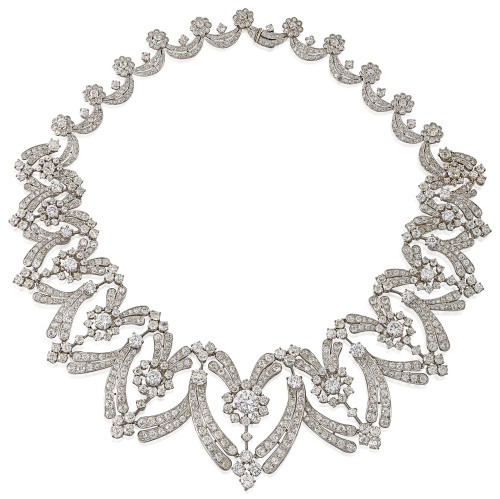
The Karola Art Deco Necklace Tiara is generally reserved for the monarch or the monarch’s spouse. Presently, it is worn by the current monarch more frequently as a necklace, but has been worn as a tiara with some regularity.
THE REUSS-KÖSTRITZ TIARA
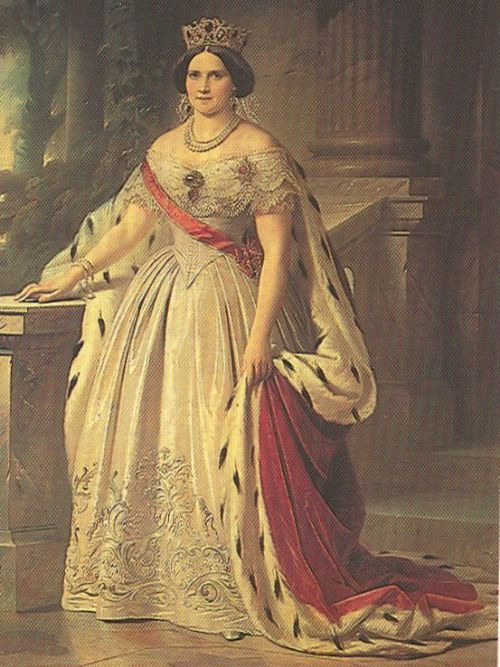
Shown above worn by Augusta, Grand Duchess of Mecklenburg-Schwerin (nee Princess Reuss of Köstritz). Augusta was the first wife of Friedrich Franz II, Grand Duke of Mecklenburg-Schwerin. They were married in 1849 and had six children. Augusta died aged 39 in 1862. Augusta is the great-great-great-grandmother of the current monarch, Karolina Augusta I, who bears her name in her honour.
The Reuss-Köstritz was created prior to 1856 and is one of the oldest tiaras in the family’s collection.

Shown above worn by Anastasia Mikhailovna, Grand Duchess of Mecklenburg-Schwerin (nee Grand Duchess of Russia). Anastasia Mikhailovna was the granddaughter of Nicholas I of Russia. She was the first cousin to Alexander III of Russia, Queen Victoria of Sweden and Queen Olga of Greece. She was the mother-in-law to Christian X of Denmark and to Wilhelm, Crown Prince of Germany. Anastasia Mikhailovna is the great-great-grandmother of the current monarch, Karolina Augusta I.
The Reuss-Köstritz Tiara is made of diamonds with three coloured stones. Originally emeralds, the stones can now be swapped out for rubies or amethysts. The tiara is generally reserved for the monarch or the monarch’s spouse. Presently, it is worn by the current monarch and her mother.
THE RUSSIAN PALMETTE TIARA

Shown above on the left worn by Anastasia Mikhailovna, Grand Duchess of Mecklenburg-Schwerin (nee Grand Duchess of Russia). The tiara has been opened up and placed in front of a kokoshnik.

Shown worn above again by Anastasia Mikhailovna, Grand Duchess of Mecklenburg-Schwerin (nee Grand Duchess of Russia). This time partially closed without the kokoshnik backing.
The tiara is made of seven palmettes and six spikes between each palmette. Palmettes get their name from their resemblance to palm tree leaves.
This tiara is also generally reserved for the monarch or the monarch’s spouse. Since 2006, the tiara has been solely worn by Karolina Augusta I. It is her favourite of the historical tiaras, being lighter and easier to wear for long periods of time.
THE THYRA CORAL TIARA

The Thyra Coral Tiara was created by Cartier and purchased by Crown Princess Thyra due to her love of, and large collection of, jewellery created with coral. The bright colour of the coral and the whimsy of the star diamonds made for a perfect tiara for the slightly eccentric Crown Princess.
The Thyra Coral Tiara is generally reserved for use by the monarch or monarch’s spouse. Presently, it is worn by the current monarch and her mother, though being a colourful piece means it is worn less than the other tiaras in the monarch’s collection.
THE THYRA DAVID WEBB NECKLACE TIARA
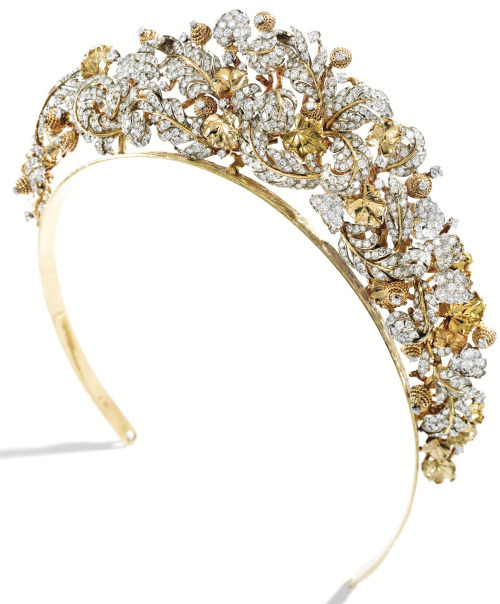
The Thyra David Webb Necklace Tiara was designed by American jewellery designer, David Webb, and purchased by Queen Thyra in 1973. David Webb was one of Thyra’s favourite designers and would purchase many of his pieces up until his death in 1975. The flowering vine with acorns is made of diamonds and gold, and can be converted into a bib-style necklace.

The Thyra David Webb Necklace Tiara is generally reserved for the monarch or the monarch’s spouse. Presently, the tiara is only worn by Eleonora, the mother of the current monarch. Karolina Augusta I has chosen not to wear the tiara as of yet.
THE THYRA IVY CIRCLET TIARA
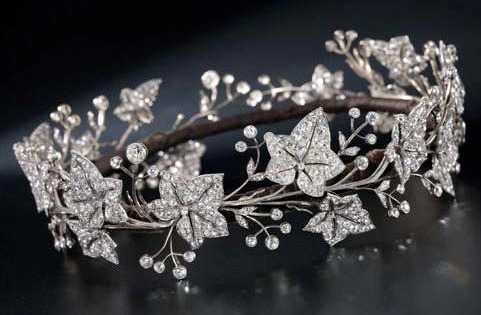
The Thyra Ivy Circlet Tiara was made by the British jewellery house, Garrard & Co around 1900 using ivy leaves from the 1860s. Then Crown Prince Paul Friedrich bought the tiara for his wife, Thyra, in 1946 as a belated wedding gift. The tiara was chosen especially because of the couple’s time spent in Britain during the Second World War. Under the Language of Flowers, ivy has a number of meanings, including friendship in adversity, constancy and lifelong love.
The Thyra Ivy Circlet Tiara is generally reserved for the monarch or the monarch’s spouse. Presently, the tiara is only worn by Eleonora, the mother of the current monarch. Karolina Augusta I has chosen not to wear the tiara as of yet.
Note: most of the other jewellery in the photos, the necklaces, earrings and brooches are also currently owned by the family and worn by various members of the family.
photos taken from pinterest. (Further pictures of the tiaras can be found in the Pinterest board), sotheby’s, or christie’s.
0 notes
Text
Top Universities in Germany: Recommendations from Guntur's Study Abroad Consultants
Are you aspiring to pursue higher education in Germany, a country renowned for its academic excellence and vibrant cultural scene? Guntur's Study Abroad Consultants is here to be your compass in navigating the vast landscape of German universities. In this comprehensive guide, we'll delve into the top universities, shedding light on the academic prowess, unique features, and why they stand out in the global educational arena.
1. Ludwig Maximilian University of Munich (LMU Munich)
At the heart of Bavaria, LMU Munich is a beacon of academic brilliance. Boasting a rich history dating back to 1472, it stands as one of Germany's oldest and most prestigious universities. The diverse range of programs, cutting-edge research facilities, and a faculty dedicated to nurturing talent make LMU Munich a top choice for international students.
2. Technical University of Munich (TUM)
For those inclined towards engineering and technology, TUM is a trailblazer. Recognized globally for its innovation and emphasis on practical skills, TUM provides a dynamic learning environment. The integration of industry partnerships and state-of-the-art labs ensures graduates are well-equipped for the challenges of the modern professional landscape.
3. Heidelberg University
Nestled in the picturesque city of Heidelberg, this university is synonymous with academic excellence. Heidelberg University is celebrated for its strong emphasis on research and interdisciplinary studies. The seamless blend of tradition and modernity creates an inspiring atmosphere for students to thrive.
4. Freie Universität Berlin (Free University of Berlin)
Freedom in education is the ethos of this esteemed institution. Free University of Berlin empowers students to shape their academic journey. With a focus on critical thinking and a plethora of international programs, it's a melting pot of diverse perspectives.
5. Humboldt University of Berlin
Founded by the visionary Wilhelm von Humboldt, this university pioneered the concept of a modern research university. Humboldt University of Berlin is a hub of intellectual discourse, fostering creativity and independent thinking. Its commitment to holistic education sets it apart.
6. University of Mannheim
Known for its strong emphasis on business and economics, the University of Mannheim is a strategic choice for those eyeing a career in the corporate world. The well-designed programs and close ties with industry leaders provide students with a solid foundation for success.
7. RWTH Aachen University
As a leader in engineering and technology, RWTH Aachen University is a driving force behind Germany's industrial innovation. The focus on practical applications and a global outlook make it a magnet for aspiring engineers and researchers.
8. University of Freiburg
Immerse yourself in a vibrant academic community at the University of Freiburg. Known for its commitment to sustainability and interdisciplinary research, it offers a nurturing environment for students eager to make a positive impact on the world.
9. University of Stuttgart
In the heart of the automotive and engineering hub, the University of Stuttgart stands tall. Renowned for its engineering programs and collaborative projects with industry giants, it prepares students for leadership roles in the competitive global market.
10. Karlsruhe Institute of Technology (KIT)
Closing our list is KIT, a powerhouse of innovation and research. With a focus on technology, engineering, and natural sciences, KIT fosters an environment where groundbreaking ideas come to life. The close-knit community and extensive international network make it a top choice for ambitious students.
In conclusion, choosing a university is a pivotal decision that shapes your academic and professional journey. Guntur's Study Abroad Consultants recommends considering not only the global rankings but also the unique offerings of each institution. Whether you're drawn to centuries-old traditions or cutting-edge technology, Germany's top universities provide a spectrum of opportunities for growth and success. Embark on your academic adventure with confidence, armed with the knowledge of the diverse educational landscape Germany has to offer.
0 notes
Text

The Parliament of Birds
Painting by Carl Wilhelm de Hamilton
“How are we supposed to bring it back?” - Asimov, Complete Robot Anthology

Scene from The Conference of the Birds
Farid ud-Din Attar
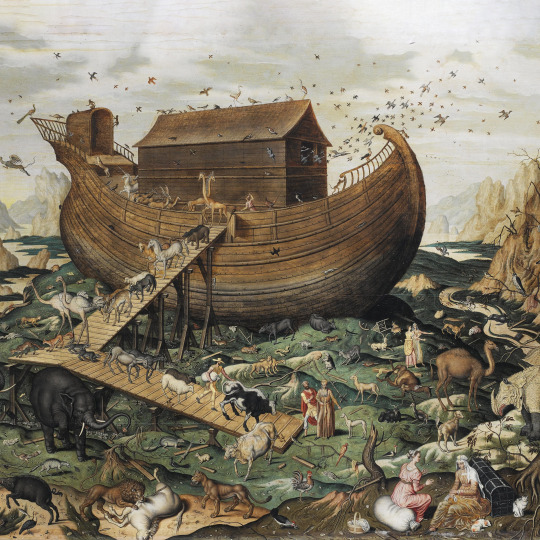
Noah’s Ark on Mount Ararat
Painting by Simon de Myle - 1570
“The old human dream of becoming a bird echoes the transition from the weighty to the volatile, from feet to wings.” - Serres, Angels A Modern Myth

A sitting of the French legislature
L'univers Illustre - 1868

Temporary installation named Conference of
the Trees - Design by Es Devlin
"Buildings that have been invaded by nature, by weeds and trees and plants that cling to their broken surfaces and nestle in gaps." - Leslie, Synthetic Worlds
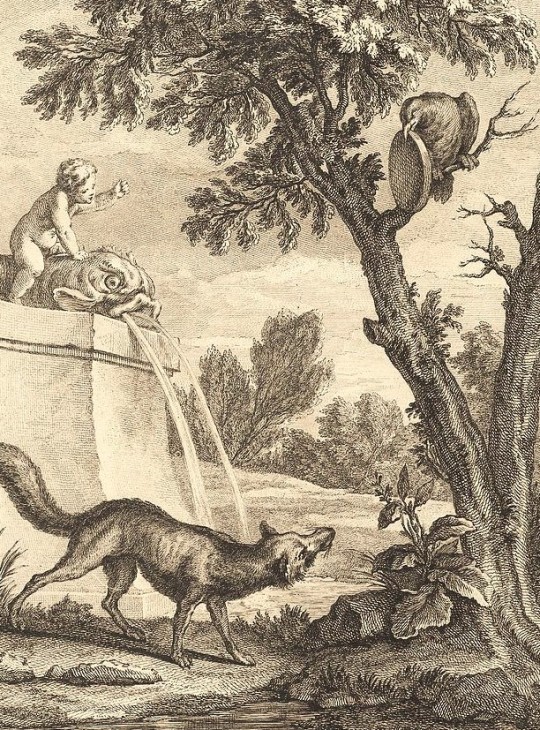
The fox and the crow
La Fontaine

Birds talking to each other
1 note
·
View note
Text

«Este es el resultado principal de la lucha milenaria entre el Mito y el Logos, entre la religión nacional tradicional y el pensamiento racional. La lucha fue ganada por espíritus destacados al servicio de la filosofía, y ésta se convirtió para la capa culta y superior de la sociedad en un sustitutivo de la religión. Pero aunque la religión tradicional estaba superada, no por eso estaba muerta. Pues la religión mítica era al mismo tiempo la religión política, y en esto radicaba su fuerza. Por ello la filosofía no se atrevió a explotar su victoria, sino que se contentó con el turbio compromiso de una interpretación artificiosa de los mitos; y, en esto radicó su debilidad. De aquí el rasgo de senescencia, fatiga y resignación que nos presenta la filosofía griega en su última fase. Cuanto más acusadamente fue retirándose la filosofía, en obediencia a ese compromiso, al silencioso rincón de estudio, fuera de la vida pública, convirtiéndose en meditación individual, tanto más se robustecieron en la masa de la población la furia milagrera y la superstición; pues bajo los duros golpes que cayeron sobre el imperio —guerra, pestes— los hombres buscaron en vano la salvación por todas partes, y estaban dispuestos a aceptar cualquier fe y cualquier superstición con sólo que éstas les prometieran la salvación.
Así se allanó en las almas de los hombres el camino a una nueva religión que ascendía con juveniles fuerzas: el cristianismo.»
Wilhelm Nestle: Historia del espíritu griego. Editorial Ariel, pág. 355. Barcelona, 1981
TGO
@bocadosdefilosofia
#nestle#wilhelm nestle#historia del espíritu griego#filosofia#religión política#religión nacional#religión tradicional#mito y logos#mito#mitos#logos#politeísmo#monoteísmo#salvación#cristianismo#imperio#imperio romano#superstición#meditación individual#vida pública#teo gómez otero#hubert robert#museo nacional del prado#el coliseo de roma
2 notes
·
View notes
Text
Wings of love
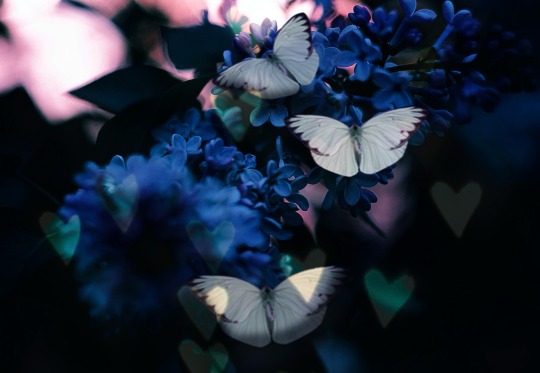
In a quaint village nestled deep within the heart of a dense, enchanting forest, there lived a young man named Wilhelm. He was an enigmatic figure, known for his deep connection with nature and a peculiar fascination with butterflies. The village folk often wondered at his peculiarities, for he would spend hours by the banks of a tranquil stream, watching these delicate creatures flutter about.
Wilhelm's love for butterflies knew no bounds. He marveled at their iridescent wings and graceful movements. To him, they embodied the ethereal beauty and fleeting nature of existence, a notion deeply rooted in his heart. He dreamt of becoming one with these creatures, to share in their ephemeral dance, a desire born of both longing and melancholy.
It was in this village that Wilhelm fell deeply in love with a young woman named Elise. She possessed an otherworldly grace, her laughter as melodious as a birdsong, and her smile capable of dispelling the darkest of clouds from Wilhelm's soul. Elise, too, shared a fondness for butterflies and often joined him in his contemplative reverie by the stream.
Their love blossomed, and they promised to be together forever. But fate can be a cruel mistress, and it was not long before illness stole Elise away from Wilhelm. He was devastated, his heart shattered into a thousand pieces. Yet, as he stood by her bedside, witnessing her final breath, he made a vow. He would find a way to transform into a butterfly, to be with Elise in spirit and share in the beauty that had bound them together.
In his grief-stricken solitude, Wilhelm immersed himself in the ancient, mystical texts of the forest. He sought the guidance of the wise and reclusive hermit, Adelheid, who was rumored to possess the secrets of transformation. Adelheid saw the anguish in Wilhelm's eyes and agreed to teach him the ancient art of metamorphosis.
For months, Wilhelm toiled tirelessly, learning the intricacies of the transformation ritual. He gathered rare herbs, chanted ancient incantations, and meditated under the shimmering moonlight. His body grew weak, but his determination never wavered, for he believed that the butterflies held the key to reuniting with his beloved Elise.
One fateful night, as the moon cast its silver glow upon Wilhelm, he felt a change surging through his being. His limbs grew light as air, and his vision blurred into a kaleidoscope of colors. With a flutter of wings, he transformed into a butterfly, his dream finally realized.
As a butterfly, Wilhelm soared through the forest, rejoicing in his newfound freedom. He danced in the warm summer breezes, sipped nectar from the fragrant blooms, and felt closer to Elise than ever before. But the world of butterflies was ephemeral, and time flowed differently for these delicate creatures.
Wilhelm's days as a butterfly were numbered, and as he felt his strength waning, he returned to the village. He fluttered to the spot where Elise's grave lay, landing gently on the fresh earth. In that moment, he saw her spirit, radiant and ethereal, waiting for him.
With the last of his strength, Wilhelm whispered his love for Elise, and as his wings turned to dust, he joined her in the realm of eternity, a love story that transcended life itself.
In the heart of the forest, the villagers would often speak of the butterfly that could not turn itself into a butterfly but had found a way to be with his beloved forever.
0 notes
Text
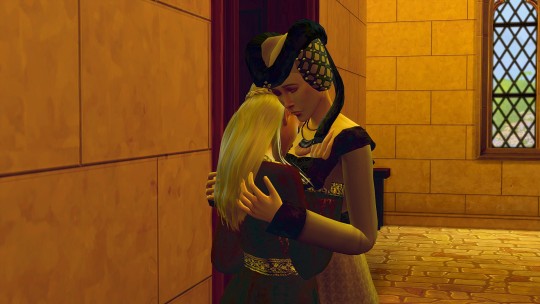
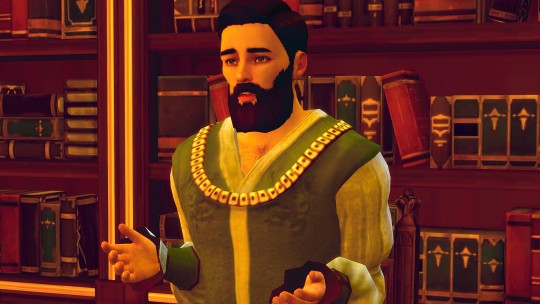

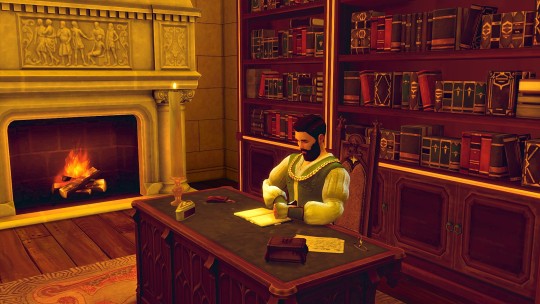

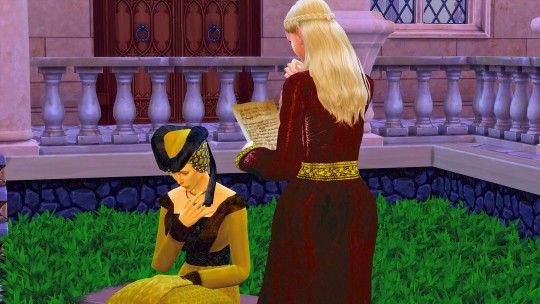



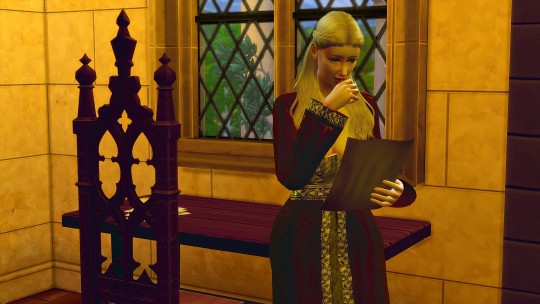

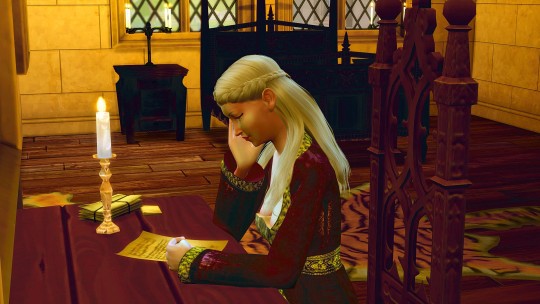

At the Castle of Amorosa, nestled within the idyllic realm of Tartosa, the dowager Queen Margaery occupied her chambers, engaged in the solemn task of perusing documents that had arrived that very morning. Among the collection, a letter bore the seal of Windenburg, and Margaery's heart quickened with a mix of apprehension and curiosity. As her eyes scanned the content penned by Lady Dorthea, Margaery's expression transformed from curiosity to sheer disbelief. The contents painted a grim tableau—a vivid account of the execution of Advorton's royal family, an unthinkable act orchestrated by none other than her own son, King Wilhelm V.
Shocked to her core, Margaery's trembling hand released the letter, letting it flutter to the floor like a leaf cast adrift by the wind. A guttural cry of agony and frustration tore from her lips, echoing the turmoil that churned within her. How could her own flesh and blood, her own son, commit such an unfathomable atrocity against his own family?
In the courtyard below, Empress Mary reveled in a precious moment of maternal respite, watching with a fond smile as her young son Fernando honed his swordsmanship skills. The peaceful scene shattered when Margaery, her countenance contorted with distress, burst through the doors with an urgency that left no room for pretense.
Margaery, her voice strained and quivering, recounted the grim tale to her daughter. The weight of the revelation bore down upon them both, a heavy burden they now shared. Empress Mary's radiant expression dimmed as the news settled upon her heart like a leaden weight. Margaery's sobs intertwined with the sorrow that enveloped them, for this was not merely the loss of a royal family, but the shattering of bonds that once held the promise of unity and shared blood.
In the hallowed chambers of Emperor Alonzo, a somber ambiance hung in the air as he busied himself with official matters of state. The sudden intrusion of his wife and mother-in-law, their faces etched with desperation and heartache, momentarily caught his attention. As Empress Mary conveyed the dire circumstances, Alonzo's gaze shifted from his work to meet hers, his own eyes reflecting a deep empathy.
Mary's plea was impassioned, a plea for aid in rescuing Princess Fiona from the clutches of her ruthless brother. But Alonzo's response was one laced with sorrowful realism. He met his wife's eyes with a mixture of regret and compassion, explaining that the window for intervention had long since closed. The impending wedding and its binding implications seemed insurmountable from their distant vantage point, a harsh reality that weighed heavily upon them all.
With a sorrowful gaze, Empress Mary withdrew from her husband's private quarters. Margaery found herself collapsing into her daughter's embrace, her heart heavy with guilt and regret. In this poignant moment, mother and daughter clung to one another, two souls united by sorrow, grappling with the harsh truth that their actions had perhaps set in motion a tragic series of events they could scarcely have foreseen.
#simsmedieval#sims4#royalsims#windenburg#royal#thesimsmedieval#sims#royalty#gameofthrones#simsstory#royal court#royalsim#royalty sims#tartosa#windenburg castle#historicalsims#history#historical sims#14th century#historical#historic#sims 4 legacy#sim legacy#ts4 legacy#legacy challenge#medieval#ancient
32 notes
·
View notes
Text
La filosofía de Platón es un gran intento de enlazar lo racional con lo irracional, lo sensitivo con lo suprasensible, lo perecedero con lo imperecedero, lo temporal con lo eterno, lo terreno con lo celeste y lo humano con lo divino. Platón descubre la respuesta a la pregunta por las definiciones de Sócrates al dar con lo general, con los conceptos, pero los hipostatiza en ideas eternas y da lugar así a un completo desdoblamiento del mundo, un dualismo que, en contraposición con las originarias concepciones griegas, reconoce el ser verdadero sólo en las ideas invisibles, mientras condena al mundo a la condición de inconsistente juego de sombras.
_*~Wilhelm Nestle*_
0 notes
Text
all the lines // tag game
Tagged by @ladytanithia. Thank you!!
Clean list of prompts can he found here
// A line from your fic that makes you laugh //
Gwilin thanked the courier profusely for handing him the letter. The cold, wet mud on the ground slushed under his feet as he ran towards the inn, and burst through the front door.
"Good news!" he proclaimed. Wilhelm's eyes immediately darted to his muddy feet.
"You're going to take off those boots so they don't track mud all over my floors?"
// A line from your fic that makes you sad //
[Fari talks with Gwilin about how casual cruelty can be.]
"You know, you're right. I've never looked at it that way." She stopped playing with his hair and rested her hands at the very top of her abdomen, where she tapped her pensive fingertips on her wrist.
"That reminds me of something that happened back home, though. On a day I went to the merchant's square with my father. I spotted a man there, sitting on a tarp in the back corner of the market, trying to sell some old, worn-out rope. He was missing a leg, his clothes were all tattered. I pitied him. He looked so broken and alone. But my baba, he took my hand and moved me away, like he was trying to protect me from him. He told me the rope the man was trying to sell was stolen from the ships at the docks, and so we had to tell the guards."
"I watched them arrest him. I watched them take him away while my father bought a silver brooch for my mother the next stand over, like nothing was happening. Nobody else in the square even looked at him while they dragged him off. It was like he was invisible."
// A line from your fic you're proud of //
[This is Gwilin talking about the cultural ramifications of the socioeconomic division of labor.]
"Here in Ivarstead, all I've had is time to think. Why are the cities rich? Isn't it because my family grew the barley, and the soldiers brought it to the brewers, and the brewers made the beer? There was a time when I supposed that the people in the cities must wonder about people like me, too. But then I thought: 'No. How could they?' All the books I read were written by them, and they were all about themselves."
// A line for your fic you think could have been better //
[Gosh. Just one? I'd rewrite the whole first chapter. Rewrite like three whole paragraphs from chapter 29. Here's one of my clunkier paragraphs from chapter 12. It includes a weird line about Gwilin's nipples that I'm super emotionally attached to. I just can't let go of it, even though I know I should probably scrap the whole paragraph and start over ;-;]
Lynly began to chat with Wilhelm near the counter while Fari went to join Gwilin at the hearth. A shiver he'd felt from the warmth of the fire at his back stiffened his nipples, and he folded his arms as she settled near him, in hopes of hiding them. He thought Fari looked wonderful even on a bad day, but as he sat there with his arms crossed awkwardly, watching the way the flames flickered against those pieces of pure hand-cut amber nestled deep within her sun-kissed skin, he thought his heart might never again find its rhythm. They looked back at him with a muted passion that made him feel he wasn’t crazy in thinking she felt a special way when she looked at him, too.
// A line from your fic that makes you want to punch a character //
[Pretty much any line said by Beifar. He's a two-dimensional character all the way, no doubt about it. Just there to be mean and be hated by others LOL. That being said, this line he says to Fari when he gets tired of helping the captain steer the ship they're on is one of my favorites in the whole story.]
"I've been out there for hours helping Captain Charlatan with the steering. You," he pointed at Fari, "Go out there and take over."
[And, of course, Winthir's impudence is legendary.]
“Could either of you tell me what happened at the spring?”
“What, she didn’t tell you?” he snapped.
“I tried to get it out of her before you got here,” said Nindalion, staring her down, “But she refuses to tell me. Are you going to talk now, Winthir?” She looked at Gwilin’s face and arms, noting the cuts and bruises, maintained a sheepish face, and said nothing.
“I can hear it all from your brother, or you can tell me yourself.”
“Gwilin’s in love with an Imperial girl,” she drawled calmly, locking eyes with her father. She shot a tiny, treacherous smirk at Gwilin from across the table.
// A line from your fic that makes you go 'aww' //
She tilted her head curiously at those sad eyes he put on. As a bird would.
"Do you know what I said to Temba right before she left?" Gwilin asked. Fari shook her head.
"I told her I left home, left Kvatch, because it wasn't the place I knew anymore. So I set out to find a new home." And tears came to his eyes as he nestled his hand at her cheek.
"But I think my new home found me, instead."
// A line from your fic that's full of symbolism //
[This whole chapter is drenched in symbolism, most of it meant to reflect the kind of relationship Fari has with her parents.]
The girl crossed her arms, put on a pout, and walked over to the workbench, where she began impatiently toying with the tiny leather-working tools laying there. Isaf felt anger taking root in her then, but she knew better than to try to push that girl into something she didn't want to do. 'Rain falls, rivers run, minds follow', she remembered her own mother telling her, long ago. Back when they still spoke.
“What about a deal?" she suggested. She turned to stand at her daughter's back, and put both hands over her shoulders. "You said you don’t want to practice again tomorrow, right?”
Fari nodded.
“Alright, so… what if you keep going to training until you feel like you don’t want to practice your swordsmanship ever again? If that day comes, you say to me: ‘Mama, I don’t want to practice my swordsmanship ever again’, and that’ll be the end of it.”
Fari put down the tools, as though she knew Isaf would've eventually taken them from her, anyway.
“You promise?"
“I promise.”
// A line from your fic that contains an Easter egg //
[Hm. I don't think I have any.]
// A line from your fic that's shocking //
[The descriptions of Narfi's mangled body from chapter 15 get to me. I actually shortened them in the story because the original ones were a little too visceral, and distracted from Temba's emotions, which I was trying to center the scene around. But this line from Gwilin facing his father's death in chapter 23 is shocking in a gentle, more spiritual way.]
There he laid, in that most infamous sleep, with his head entrenched in the pillow and a hand on his abdomen. The day's last ray of light shone on this hand, and invited Gwilin to come closer, so he could feel the bitter truth against his skin. He neared the bed, dazed, and took hold of Nindalion. The cold in his fingers shocked him at first, but his grip held steadfast as he knelt to place his forehead on the edge of the bed.
// A line from your fic you want to talk about more //
[I love, love, love the relationship dynamic Gwilin has with his siblings. I've mentioned this on other posts, but the way siblings relate to each other when there's like ten or more in a single family is super fascinating to me. Most of my thinking on this is based on stuff my grandparents told me about having tons of siblings themselves. I am especially interested in what happens when the matriarch/patriarch of a family dies–which of them come together, come back home, what things they have to put in order, how things are split up between them, the fights that result from inheritance stuff, etc. Makes for sort of funny lines like these, where Gwilin's brother is talking with him about who's gonna take over the family farm.]
"Listen. I only mention it because Eowyn, Mari, Thonil, Gwinwyn, Aralion, Malstar, Renilron, and Beluin don't live at the farm anymore, Suri is bound to move away soon, and, I love Winthir, but she couldn't run the farm if her life depended on it. If anything should happen to dad, either you or I would have to take charge."
[Imagine having so many siblings born 15-25 years apart. You could straight-up forget some of their names. LOL]
1 note
·
View note